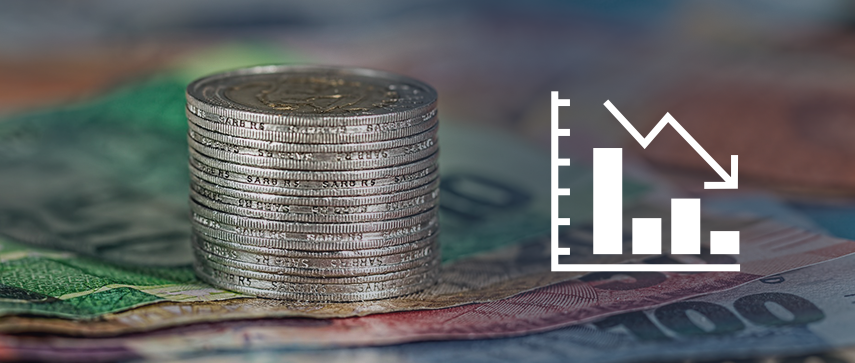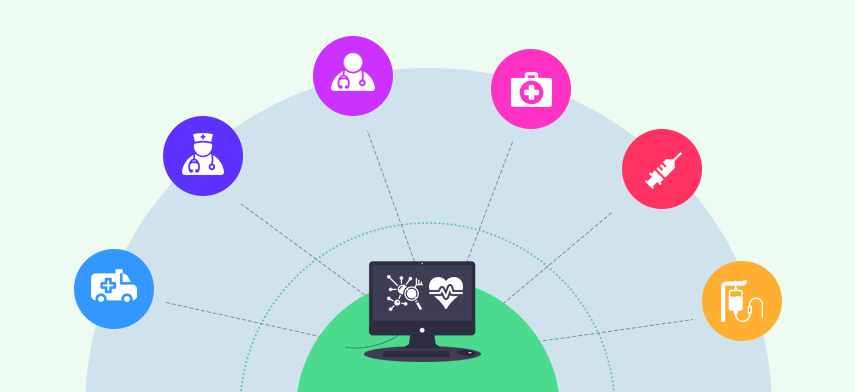Consumers have become more conscious and engaged about their health keeping in pace with the advance of healthcare technologies. The situation has given rise to the need for remote care and real-time health statistics for better patient outcome. But the current healthcare infrastructure is not equipped with technologies which enable it to transact real-time patient information or take proactive measures.
Recently, we have seen the digital transformation of healthcare which can be taken to a new level with the integration of the Internet of Things or IoT. Hospitals and healthcare providers can look to improve the quality of their care and reduce expenses by adopting IoT.
In this post, we will talk about the healthcare challenges that IoT can solve.
9 Challenges in Healthcare that IoT can Eliminate
So, how do IoT and healthcare intertwine with each other? What are the top healthcare challenges that IoT can eliminate? Here is a look.
1 Changing Dynamics
Meeting the needs of an ever-changing healthcare environment brings up a number of challenges for doctors, hospitals and other healthcare providers. The cost of healthcare is already high and soon it will go beyond the reach of the ordinary citizen. The shifting demographics have brought emerging markets in the highlight with their own unique needs. Along with that, we are experiencing an aging population with the need for personalized care.
- Solution
IoT can bring end-to-end connectivity and affordability in the healthcare system. A technologically powered setup can bring down the costs, ensure optimum utilization of resources and lead to improved planning and allocation. IoT solutions enable physicians to dedicate their time to personalized healthcare which is the need of the aging population. The data collected by IoT helps physicians to deliver specialized healthcare meeting the need of individual patients.
As a result, doctors can give more time to each patient and increase their awareness considerably. IoT helps in the development of an improved doctor-patient relationship.
- Example
Insight Optics is a unique app that enables Primary Care Physicians to conduct eye exams on their patients. Using an ophthalmoscope compatible with smartphone cameras, the physician can take retina scans and send them to an ophthalmologist for review through the app. The solution eliminates the need for visiting clinics reducing the cost for the patient and the provider.
2 Patient Care and Safety

Ensuring safety and providing the highest level of care is the priority of any healthcare system. But real-life conditions like waiting times and duration between clinic visits generate the need for better disease management. Many hospitals put restrictions on patient readmissions and collection of patient data is also delayed by several constraints. Patients need a way to access cost-effective treatment and care delivery while ensuring the quality of care.
- Solution
IoT in healthcare can be used to ensure patient care and safety. Connected devices like sensors and wearables collect real-time patient information making them available to physicians and healthcare providers through mobile devices. The data can reduce waiting times and help doctors to utilize clinical visits only for diagnosis and treatment.
IoT can help in remote monitoring of the patient and alert healthcare providers in case of emergencies. A study conducted by the Center of Connected Health Policy found a 50% decrease in 30-day readmission rate of patients with heart failure who were under remote monitoring.
The patient data can be stored on the cloud and made available to different parties like physicians, insurance providers, hospitals and so on. The data can be tied down to the responsible parties increasing patient safety.
- Example
Fitbit has launched the Fitbit Plus App to collect and share data with healthcare providers. The Fitbit wearables can track different real-time data like heart rate and integrate them in the app for personalized interventions. Patients will also be able to use glucose monitors, pressure cuffs and other devices with the app.
3 Quality and Compliance
The healthcare industry has to comply with an increasing number of regulations while ensuring quality on all aspects. It also has to deal with a high amount of medical errors that impact millions of patients. In fact, medical errors are responsible for 251,000 deaths annually and rank as the third leading cause of death in the USA.
Healthcare providers also need a secure drug supply chain management so that medicines can be supplied effectively at an affordable cost to the patients.
- Solution
IoT can put in automatic checks and screening to help healthcare providers comply with the regulations. Using different features like patient monitoring and real-time patient data, IoT can also help to reduce the number of errors saving thousands of lives. The technology is ideal to standardize processes and delivery of care so that chances of errors are reduced.
Healthcare providers can also enhance their supply chain management with mobility solutions whether they are dealing with drugs or other medical supplies. IoT can make healthcare transparent for both the provider and the patient and ensure compliance.
- Example
Digital Pharmacist uses an app to connect patients with pharmacists. Patients can interact with pharmacists, access educational content and refill their prescriptions through the app at affordable costs.
4 Decreasing Operational Costs

Healthcare cost in the USA is almost two times more than similar countries like Canada, UK, Germany, Sweden, and the Netherlands. USA spends 17.8% of its Gross Domestic Product (GDP) on healthcare while other countries spend only 11.5%.
One of the main reasons for high expenditure is the operational costs which turn up in millions. Hospitals and other healthcare providers need a solution to increase the efficiency of their operations in order to cut down the costs.
- Solution
IoT has the potential to automate patient care workflow and unleash interoperability to bring down operational costs. It can also enable machine-to-machine interaction, data transfer, and information exchange to make healthcare delivery efficient and cost-effective.
IoT carries the goal of minimizing the number of human interventions and manual interactions in the healthcare process bringing along economic benefits. It not only cuts down operational costs but also leads to healthier and safer patients.
- Example
RipplesIOT integrates with existing hospital ERP software and enables real-time monitoring of hospital devices and assets. Healthcare providers can get usage report of their medical equipment using sensors and maintain optimum operational efficiency. The solution also reduces inspection and maintenance costs through a proactive approach.
5 Eliminating System Errors
We have already discussed how medical errors impact the health outcome of patients and the ways IoT can help it. As it turns out, human errors are one of the main sources of mistakes in the healthcare industry. The errors not only creates risks for patients but also impacts the operations and the bottom line of healthcare providers.
- Solution
IoT can be used to carry out several tasks that were done by humans earlier. You can automate various processes so that the chances of human errors are negligible. Machines don't suffer from human problems like exhaustion or loss of concentration and always provide accurate results.
For example, machines won't make typing mistakes while recording patient data like humans. Proper programming enables IoT to perform tasks seamlessly and consistently. The technology is also ideal for monitoring operations and helps healthcare providers to supervise instances where mistakes are likely to happen.
IoT can be used to improve systems and processes and eliminates common errors from the system.
6 Disease Management
Millions of people in America suffer from chronic diseases like heart problems, diabetes, obesity, cancer, arthritis, stroke among many others. Disease management is a crucial aspect in such cases and impacts the outcome of the treatment. But the patients are not always under medical supervision and spend time outside the clinic or hospital. A solution is required to monitor the status of the patients which help them manage their diseases effectively.
- Solution
Patients of chronic diseases need to take care of themselves between a hospital or clinic visits. IoT can help them keep track of their health through wearables and other devices like asthma tools, heart monitors and glucometers. The patient can get a complete overview of their health like blood pressure, cholesterol levels, body mass index, body temperature and more on their fingertips.
The data collected from the devices are stored on the cloud and available to physicians in real-time. The healthcare professionals can use the data and take help of remote patient monitoring to assist the patients in managing their diseases.
- Example
Propeller’s Breezhaler device has enabled asthma patients to manage their disease effectively. Developed in collaboration with Novartis, the device uses sensor-based inhalers to collect patient data and transmit it to the app.
7 Enhancing Patient Experience

Thanks to the internet, everyone has access to unlimited information in this age. The patients have also become more aware and place increased demands on healthcare providers and professionals. The industry needs a suitable platform to serve the patients according to their needs and fulfill their demands effectively.
- Solution
IoT can enhance the patient experience on different levels. Real-time patient data and cloud connectivity enable physicians to always keep a watch over the patients. The daily health-related data can be used for preventive care by spotting any problem before they develop a chronic disease.
IoT can help in the short-term care of patients who have been discharged from the hospital. They are not required to visit the hospital and can recover in the comfort of their home using IoT technology. Senior patients who live by themselves can use IoT-based home care solutions to stay healthy. They can track their health using the data collected by IoT devices and get instant help in case anything goes wrong.
- Example
QoC Health Inc develops health apps to follow-up patients after procedures like surgery. The app uses visual images of the wound and questionnaires to determine the level of pain which are directly communicated with the care providers.
8 Shortage of Doctors in Rural Areas
The rural areas in the USA still don't have an adequate number of physicians for the population. There are only 39.8 primary care physicians per 100,000 people in rural parts of the USA which mean many patients are not covered effectively. Apart from primary care physicians, there is also a noticeable shortage of specialists like dentists, ENT, and others.
- Solution
IoT enables patients to get in touch with doctors and healthcare providers even if they are located thousands of miles away. IoT and mobile solutions are ideal for medics to instantly check up on the patients and identify the diseases on-the-go.
Physicians can use patient data and video technology to interact face-to-face with patients located in remote areas. Even specialists can use the same techniques to offer their consultation and service. IoT can increase the accessibility to healthcare for patients who are unable to visit a physician physically.
- Example
MDLive provides a simple platform for patients to connect with certified doctors and therapists. Consultations are provided through the app, phone, and video saving the patient a trip to the clinic.
9 Data Management
Medical data is poised to reach humongous amounts in coming years. According to IDC and EMC, health data will keep growing at 48% annually. In 2013, healthcare data was calculated at 153 Exabytes. By 2020, it is expected to reach 2,314 Exabytes.
The healthcare industry is finding it difficult to manage all this data. On top of that, they have to deal with constant real-time data collected by the IoT devices and sensors.
- Solution
Cloud-based IoT systems can collect information from a wide range of devices and report data in real-time. It is also possible to analyze the data in real-time to develop insights for improved diagnosis and treatment. Healthcare providers can get the analysis in a visual format so that they can quickly make sense of the information.
The features cut down on the need to store and manage raw data.
- Example
AirStrip offers an interoperable platform which integrates data from EHR, health information exchanges, medical devices, and other resources and makes them available to medical providers.
Conclusion
IoT in healthcare is a recent development but has the potential to bring a complete transformation. It will improve the outcome of treatment, help monitor patients, achieve preventive care and reduce the cost of operations. IoT is the next phase of healthcare's digital transformation and Mobisoft Infotech can provide you with the right solutions to bring the change. Working together, we can create a healthcare system which is affordable and reliable with a high success rate.





 May 21, 2019
May 21, 2019


